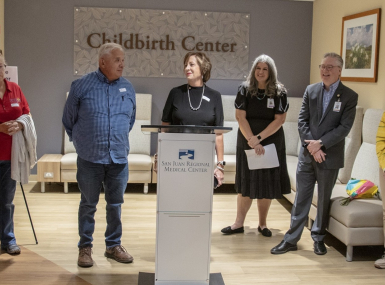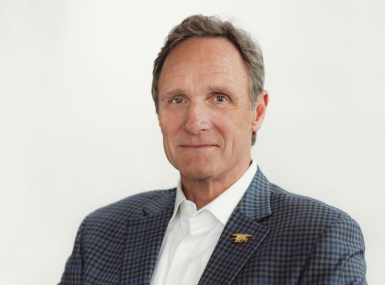Population, Urbanization Drives Growing Importance of GIS
Author
Upcoming Events
Related News
The current trends in population and urbanization will increasingly challenge our ability to effectively manage counties and cities, and their relationship with the natural environment. Already, over 54 percent of the world’s population lives in urban areas. By 2050, this is projected to grow by an additional 12 percent. During this same time, the population is expected to increase from 7.3 billion to 9.7 billion, which means that urban areas will house more than two-thirds of the people in the world.
These trends will strain our housing, transportation, infrastructure, public safety, and other fundamental systems and services on which modern society depends. On the environmental side, these trends also mean that communities will struggle to address climate change and ways to create sustainable and resilient development.
While these issues will continue to pose great challenges to local governments, the new innovations in information technology are creating “smart” approaches and solutions that will help address many of these problems. In particular, geographic information system (GIS) and related geospatial technologies are rapidly advancing and emerging as a platform to help communities better plan and manage the complexity of the urban environment.
My sense is that this technology will emerge as a transformational platform that not only improves understanding, but also provides a knowledge foundation for better designing and managing our future. In particular, I am excited by the emerging integration of GIS with web services and the internet.
This web GIS platform is a major leap forward and already being acknowledged as a central concept for smart communities. It integrates real-time data from a host of sources into the GIS, including sensing devices that measure transportation flows and energy consumption. This platform is creating what some are calling an “urban nervous system.”
This system immediately informs planners, decision-makers and citizens about the health of their community visually and analytically, indicating where action must be taken.
Web GIS is also being used as a platform for smarter planning; wherein geographic information of many types and from many sources can be integrated, analyzed and used to quickly design and evaluate alternative scenarios as part of the decision-making process. This prompts planners and decision-makers who use GIS to consider all aspects including people, infrastructure, land use and the natural environment. This approach promises the creation of thoughtful plans that will lead to more attractive, livable and sustainable urbanization.
Another emerging vision for the application of GIS involves the ability to dynamically interrelate and integrate all types of data using geographic location as a common framework. For example, by using street addresses, x,y locations, ZIP codes or other geo-referencing, almost any kind of data can be integrated and easily analyzed and visualized.
This kind of geospatial capability will unlock the how and why cities function in particular ways. One can imagine the ability to study relationships between crime patterns, demographics, education, homelessness and human health. Equipping urban officials and managers with these kinds of insights will not only create better understanding but also provide a whole new foundation for this understanding and communicating through the language of maps.
Beyond managing communities more efficiently, GIS is engaging them. Emerging cloud technologies are allowing GIS to be applied to a whole new class of applications that provide open data, transparency and better citizen engagement.
A new “community GIS” called a GeoHub is emerging that provides citizens, nongovernmental organizations (NGO), schools, civic startups and other agencies with access to not only open data from government but also a variety of mapping, analytic tools and apps that can be used for public-government initiatives and collaborations.
It is my sense that, in a few years, the GeoHub platform will become commonplace and enable governments to easily share and involve with their entire community. This will involve story maps and apps that are built around local initiatives such as fighting crime, reducing traffic accidents, trash clean up, addressing the need for low-cost housing and improving public services.
Current initiatives that illustrate how this new kind of community GIS will transform urban areas around the world include GeoHub implementations in Pinellas County, Fla. and Los Angeles. These initiatives are promoting better decision-making and transparency leveraging a more engaged community. Also, GIS with 3D modeling software is revitalizing an aging industrial district in Cologne, Germany. And research using GIS technology in London, England is being used to determine what will make communities safer and more livable.
As GIS technology continues to evolve as an integrative platform, I believe its powerful analytical and visualization capabilities will provide the necessary insight to better understand and resolve the challenges facing our urban environment.
Attachments
Related News

Now I know I can adapt my communication style
San Juan County, N.M. Commissioner Terri Fortner spent her career working with people one-on-one, but she overcame hangups about online communication when the pandemic forced her onto video calls when she first took office.

County service meets a veteran’s need for purpose in Spotsylvania County, Virginia
After Drew Mullins transitioned from a high-performance lifestyle in the military, he found the environment and purpose he sought when he took office in his county.
Now I know that solid waste is complicated
Custer County, Idaho Commissioner Will Naillon says solid waste removal is "one of the things that people often take for granted until it’s their job to make sure it happens... that’s the story of being a county commissioner."
![JackDangermond2[1].jpg Image of JackDangermond2[1].jpg](https://www.naco.org/sites/default/files/styles/610x610/public/JackDangermond2%5B1%5D.jpg?h=b540c8bb&itok=6jUh6f-X)